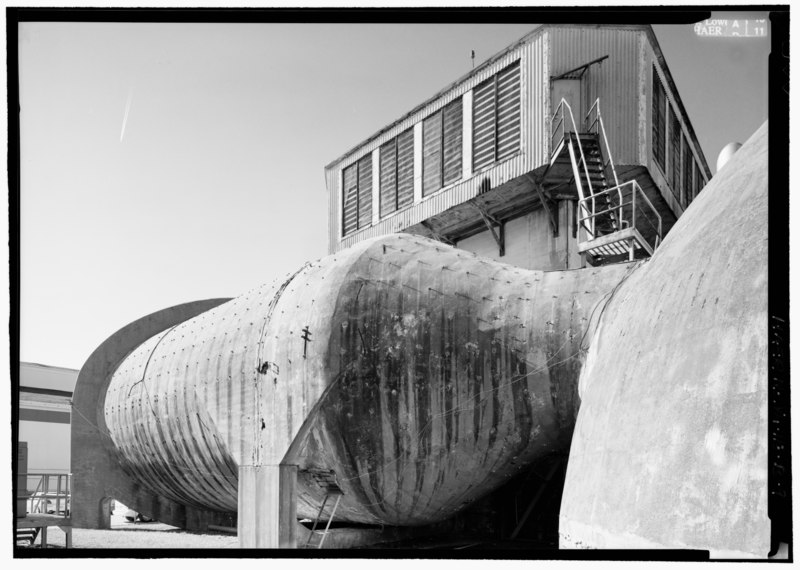File:DETAIL VIEW OF CAST CONCRETE SHOWING TRANSITION FROM TUNNEL TO IGLOO. - NASA Langley Research Center, 8-Foot High Speed Wind Tunnel, 641 Thornell Avenue, Hampton, Hampton, VA HAER VA,28-HAMP,4B-9.tif

Original file (4,972 × 3,544 pixels, file size: 16.81 MB, MIME type: image/tiff)
Captions
Captions
Summary[edit]
| DETAIL VIEW OF CAST CONCRETE SHOWING TRANSITION FROM TUNNEL TO IGLOO. - NASA Langley Research Center, 8-Foot High Speed Wind Tunnel, 641 Thornell Avenue, Hampton, Hampton, VA | |||||
|---|---|---|---|---|---|
| Photographer |
Lowe, Jet |
||||
| Title |
DETAIL VIEW OF CAST CONCRETE SHOWING TRANSITION FROM TUNNEL TO IGLOO. - NASA Langley Research Center, 8-Foot High Speed Wind Tunnel, 641 Thornell Avenue, Hampton, Hampton, VA |
||||
| Description |
Wang, Charissa Y, field team; Durst, Donald M, field team; Herrin, Dean A, project manager; Lowe, Jet, photographer; Hardlines: Design and Delineation, delineator; Stewart, Robert C, historian |
||||
| Depicted place | Virginia; Hampton; Hampton | ||||
| Date |
1995 date QS:P571,+1995-00-00T00:00:00Z/9 |
||||
| Dimensions | 5 x 7 in. | ||||
| Current location |
Library of Congress Prints and Photographs Division Washington, D.C. 20540 USA http://hdl.loc.gov/loc.pnp/pp.print |
||||
| Accession number |
HAER VA,28-HAMP,4B-9 |
||||
| Credit line |
|
||||
| Notes |
|
||||
| References |
|
||||
| Source | https://www.loc.gov/pictures/item/va1795.photos.192377p | ||||
| Permission (Reusing this file) |
|
||||
File history
Click on a date/time to view the file as it appeared at that time.
| Date/Time | Thumbnail | Dimensions | User | Comment | |
|---|---|---|---|---|---|
| current | 12:22, 4 August 2014 |  | 4,972 × 3,544 (16.81 MB) | Fæ (talk | contribs) | GWToolset: Creating mediafile for Fæ. HABS 2014-08-02 (3401:3600) |
You cannot overwrite this file.
File usage on Commons
The following page uses this file:
Metadata
This file contains additional information such as Exif metadata which may have been added by the digital camera, scanner, or software program used to create or digitize it. If the file has been modified from its original state, some details such as the timestamp may not fully reflect those of the original file. The timestamp is only as accurate as the clock in the camera, and it may be completely wrong.
| Camera manufacturer | Sinar |
|---|---|
| Camera model | 54H |
| Author | Library of Congress |
| Width | 4,972 px |
| Height | 3,544 px |
| Compression scheme | Uncompressed |
| Pixel composition | Black and white (Black is 0) |
| Orientation | Normal |
| Number of components | 1 |
| Number of rows per strip | 13 |
| Horizontal resolution | 699.98590087891 dpi |
| Vertical resolution | 699.98590087891 dpi |
| Data arrangement | chunky format |
| Software used | Stokes Software Inc. IWS IWS - Version 1.4.0.4 |
| File change date and time | 12:17, 1 May 2006 |

